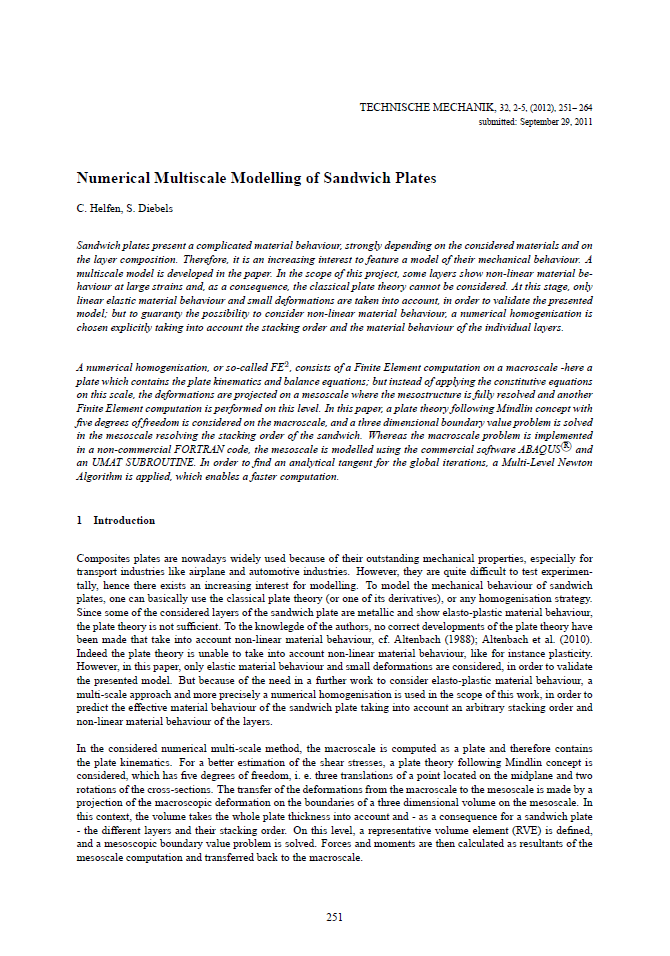Numerical Multiscale Modelling of Sandwich Plates
Abstract
Sandwich plates present a complicated material behaviour, strongly depending on the considered materials and on the layer composition. Therefore, it is an increasing interest to feature a model of their mechanical behaviour. A multiscale model is developed in the paper. In the scope of this project, some layers show non-linear material behaviour at large strains and, as a consequence, the classical plate theory cannot be considered. At this stage, only linear elastic material behaviour and small deformations are taken into account, in order to validate the presented model; but to guaranty the possibility to consider non-linear material behaviour, a numerical homogenisation is chosen explicitly taking into account the stacking order and the material behaviour of the individual layers.
A numerical homogenisation, or so-called FE2, consists of a Finite Element computation on a macroscale -here a plate which contains the plate kinematics and balance equations; but instead of applying the constitutive equations on this scale, the deformations are projected on a mesoscale where the mesostructure is fully resolved and another Finite Element computation is performed on this level. In this paper, a plate theory following Mindlin concept with five degrees of freedom is considered on the macroscale, and a three dimensional boundary value problem is solved in the mesoscale resolving the stacking order of the sandwich. Whereas the macroscale problem is implemented in a non-commercial FORTRAN code, the mesoscale is modelled using the commercial software ABAQUS® and an UMAT SUBROUTINE. In order to find an analytical tangent for the global iterations, a Multi-Level Newton Algorithm is applied, which enables a faster computation.





